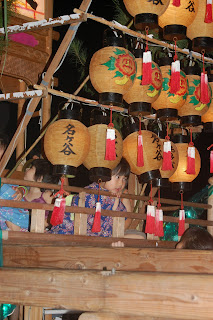This actually took place the 13th of August:
Suzu has been nothing but eventful, and I find myself thinking how appropriate the kanji (珠洲), which means “pearl state”, is. The city itself is hard to penetrate, but once I did, I found that there was an absolute wealth of beauty and fascinating attractions.
I was introduced to Naho this day, a beautiful Canadian girl who speaks native Japanese because of her parents, but admits that she cannot read or write it as well as she ought to be able to. When she speaks, I become shamefully prideful because I understand most of what she says, unlike every other Japanese person I’ve met. This is likely because she speaks Tokyo-ben (Tokyo dialect, or as my supervisor calls it, city slicker dialect), the dialect that one learns in university. Inexplicably, it reminds me of my supervisor who says jokingly, “I speak three languages: English, Japanese, and Ishikawa-ben.”
We went to two beaches, the first because of its renowned beauty and the second because of its accessibility. I cannot remember the name of the first beach, but it was breathtakingly beautiful if one ignores that rubbish that naturally accumulates because of its geography. The irony of the beach is not lost on anyone. However, all the good spots on the beach were taken, it proved to be too dangerous for us more timid swimmers to get to the nicer waters, so instead we choose to go the beach which is only ten minutes away from Suzu as opposed to the first one (which took us a forty-five minutes to get to).
Michael climbing the rock at an unnamed beach.
After eating a dinner at a restaurant that was far too expensive for what it provided, we went to the Suzu Matsuri. It was simultaneously the most frenetic and the most laid back event I had ever seen. The lively taiko beat was always drifting in and out of street, but the kiriko (floats) stopped every five minutes. Whether this was to give the men carrying them a break, or if it was a tradition, I was not sure.
The kiriko are insanely dangerous! The tilt and sway, and are stopped because they often catch the ubiquitous power lines that arch over the streets. At this point, a person must climb up and free it. Mind you, these people have drunk, by this time, vast amounts of cheap, bitter beer. I wanted to yell “abunaiyo” (Watch out!) every few seconds. Six years previously, Takeyo (Anne’s boyfriend) informed us, a spectator was paralyzed because they had not been watching out for the seemingly impossible to control kiriko. It was enough to make me nervous, to say the least.
I got very few good photos because I have yet to figure out how to use my camera in the nighttime. The oddest thing was that I could not tell if anyone was enjoying themselves that night. It seemed to some that the matsuri was a stupid, boring, and troublesome custom. I found out that there is also not enough men in each neighborhood to bear the kiriko because of the negative population growth and the Diaspora to the cities Takeyo helped out Iida town, and he didn’t seem to pleased to do it.
Little kids hitching a ride on the kiriko. Michael begged me to get at least one picture of this little girl.
Everyone will tell you that Japan is the land where tradition meets modernity, and they hold each other's hands happily, even willingly. Many will argue against this idea, but this matsuri was definitely agreeing with that concept. Matsuri is a very old tradition, yet all of the kiriko are illuminated by electricity, and the men who urge the carriers on hold lightsaber-like swords as they scream their nonsense cheers. Even as the electric lights poored from the many old lanterns, I could still feel the antiquity burning brighter than any lamp could







No comments:
Post a Comment